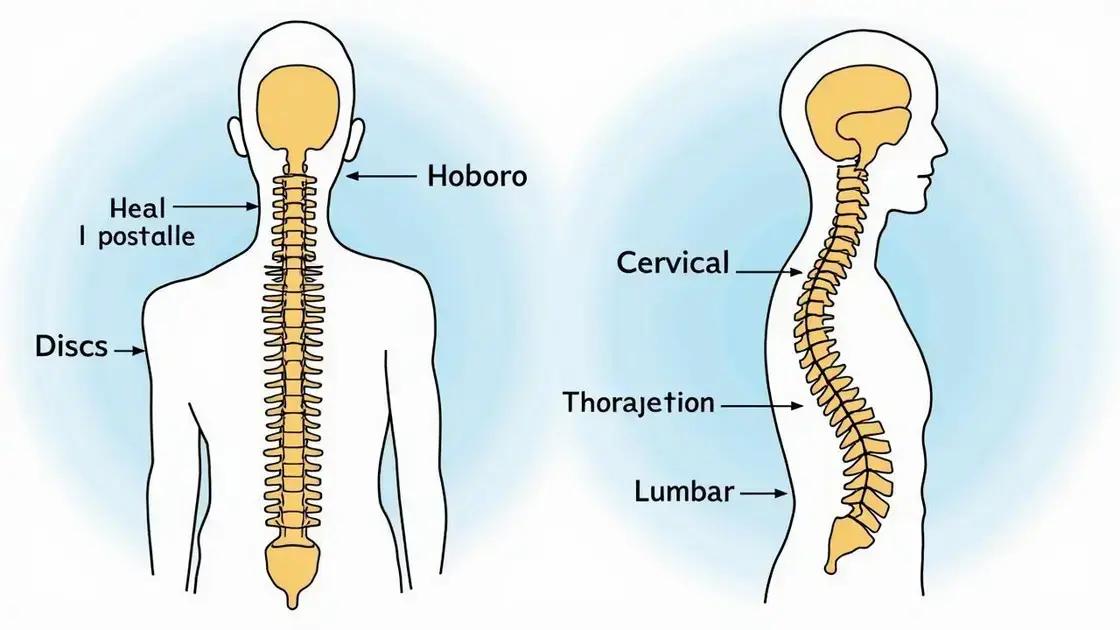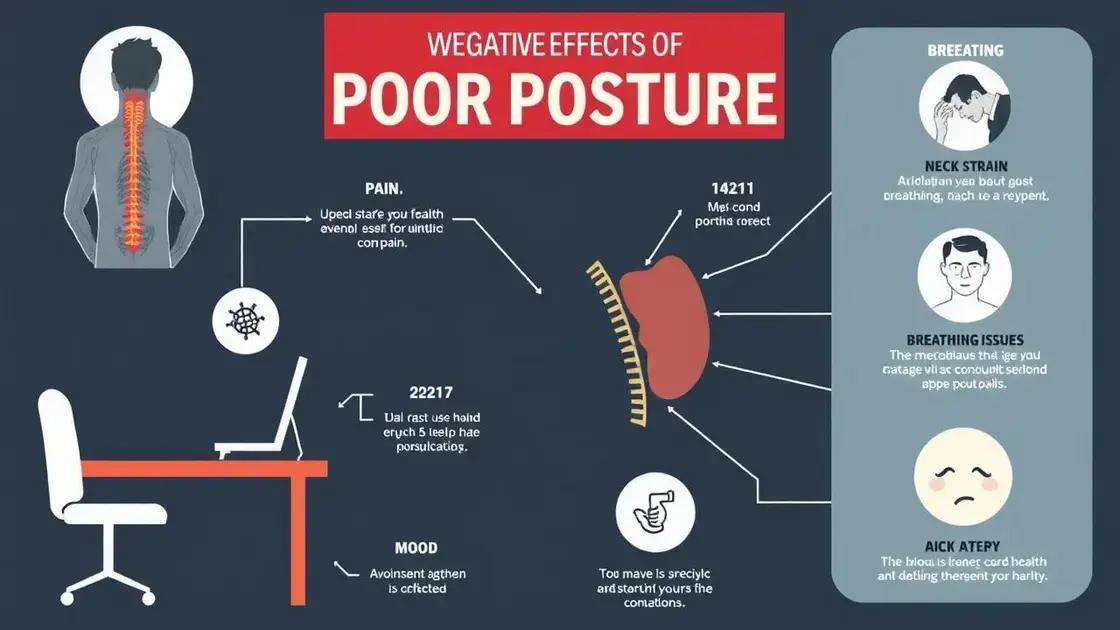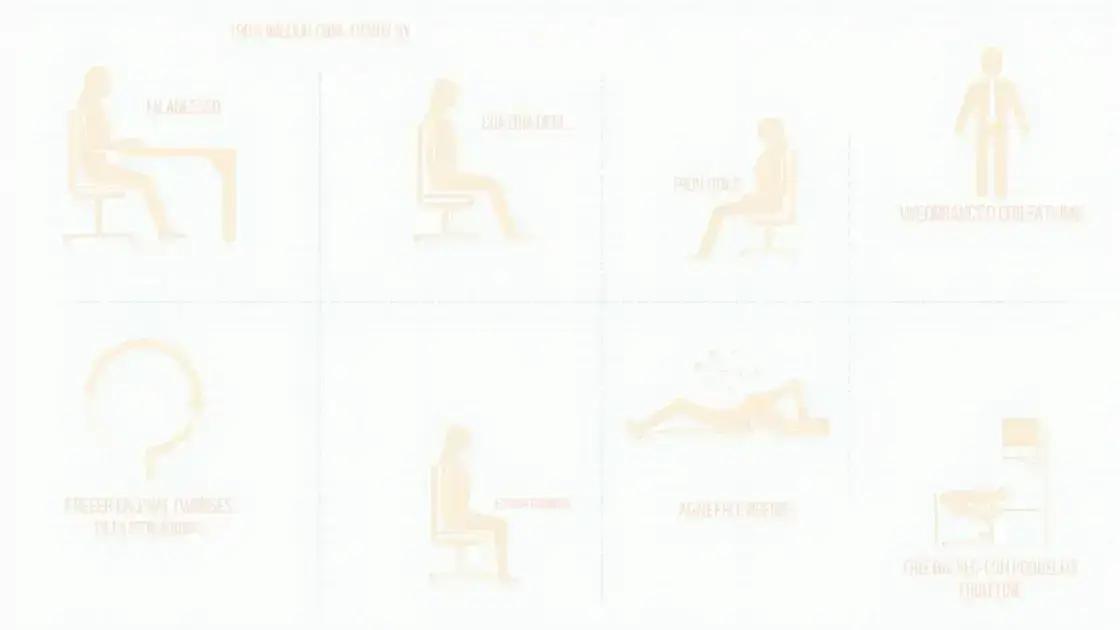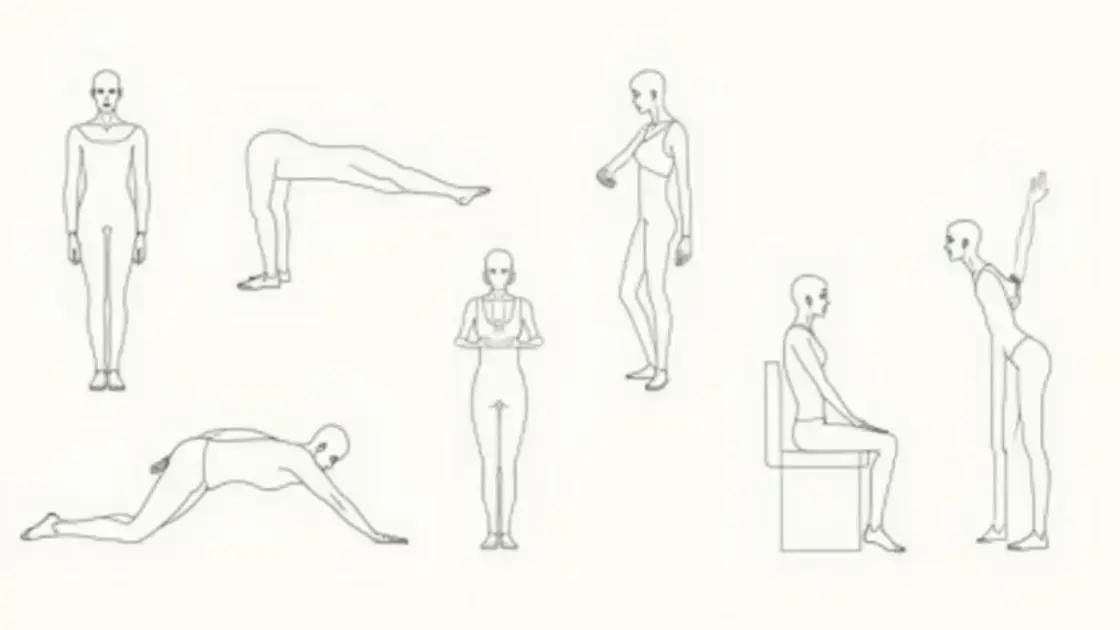The Importance of Posture Awareness for Spinal Health highlights the critical role that proper posture plays in preventing pain and discomfort. By understanding spinal anatomy, recognizing the effects of poor posture, and practicing practical tips and exercises, individuals can significantly improve their spinal health and overall well-being.
Maintaining good posture is essential for spinal health. The Importance of Posture Awareness for Spinal Health cannot be overstated, as poor posture can lead to serious complications over time. By becoming aware of how you sit, stand, and move, you can protect your spine and enhance your overall quality of life. In this article, we will discuss the understanding of spinal anatomy, the impact of poor posture, practical tips for improving awareness, and exercises that can strengthen your spine.
Understanding Spinal Anatomy and Posture

Understanding spinal anatomy and posture is crucial for anyone looking to maintain optimal spinal health. Our spine is made up of vertebrae, which are the small bones that stack on top of one another. These vertebrae provide both structure and flexibility, enabling us to stand, bend, and twist. Connecting the vertebrae arediscs, which act as cushions, absorbing shock and allowing smooth movement between the bones.
The spine is divided into three main regions: the cervical spine (neck), the thoracic spine (upper back), and the lumbar spine (lower back). Each region is designed to support different functions, such as head movement and load bearing. Correct posture promotes proper alignment, which is essential for the health of these regions.
The Role of Posture
Good posture entails holding your body in a way that places the least amount of strain on supporting muscles and ligaments during movement. When sitting, standing, or sleeping, the goal is to keep your spine aligned and balanced. Proper posture reduces stress on the spine, leading to less discomfort and a decreased risk of injury.
When we are mindful of our posture, we not only support our spinal health but also improve muscle function and overall body mechanics. For instance, sitting properly while working at a desk or using a smartphone can help prevent muscle fatigue and chronic pain.
By learning about spinal anatomy and practicing good posture, we can take meaningful steps toward a healthier and more active lifestyle.
The Impact of Poor Posture on Health

Poor posture can have a significant impact on your overall health. Some common effects include back pain, neck strain, and other musculoskeletal issues. When the spine is not aligned properly, stress is placed on the surrounding muscles and ligaments, which can lead to discomfort and chronic pain.
Back Pain is one of the most prevalent issues related to poor posture. It can develop over time, leading many to seek treatment for relief. Moving in a way that does not support spinal alignment can exacerbate back pain, particularly in the lower back.
Neck Strain is another common problem, especially for individuals who spend long hours looking down at screens or mobile devices. This prolonged forward head posture increases tension on the neck muscles, leading to discomfort and potential headaches.
Other Health Issues
In addition to back pain and neck strain, poor posture can affect your breathing. Slouching compresses the lungs and diaphragm, making it harder to take deep breaths. This can limit oxygen intake and lead to feelings of fatigue.
Moreover, poor posture can impact your mood and mental health. Studies suggest that slouched body language may contribute to feelings of depression and low energy. Standing tall and maintaining good posture can boost confidence and help improve mood.
Finally, poor posture can hinder overall body mechanics, leading to injuries during physical activities. When the body is not aligned correctly, it increases the risk of strains and sprains.
Practical Tips for Posture Awareness

Becoming more aware of your posture can lead to better spinal health. Here are some practical tips for improving posture awareness:
1. Check Your Sitting Position
When you sit, make sure your back is straight, shoulders relaxed, and feet flat on the floor. Your knees should be level with your hips, and your chair should support your lower back.
2. Use Ergonomic Furniture
Invest in ergonomic chairs and desks that encourage good posture. Adjustable desks can help you alternate between sitting and standing, which can reduce the risk of poor posture.
3. Take Frequent Breaks
Every 30 to 60 minutes, take a short break to stand, stretch, and walk around. This practice can relieve muscle tension and improve circulation.
4. Practice Mindfulness
Use reminders throughout the day to check your posture. For instance, set an alarm on your phone or use sticky notes in your workspace to prompt you to sit up straight.
5. Strengthen Your Core
Having a strong core supports your spine. Incorporate exercises such as planks and bridges to strengthen your abdominal muscles.
6. Pay Attention to Your Body
Learn to listen to your body. If you feel discomfort while sitting or standing, adjust your position to relieve the strain.
By implementing these practical tips, you can improve your posture awareness and contribute to better spinal health.
Exercises to Improve Posture and Spinal Health

Incorporating exercises into your routine can greatly enhance your posture and support spinal health. Here are some effective exercises to improve your posture:
1. Plank
The plank is great for building core strength. Start in a push-up position with your arms straight and hold your body in a straight line. Keep your core tight and hold for 20-30 seconds.
2. Bridge
Lie on your back with your knees bent and feet flat on the floor. Raise your hips towards the ceiling, squeezing your glutes at the top. Hold for a few seconds and slowly lower back down. Repeat 10-15 times.
3. Cat-Cow Stretch
Start on your hands and knees. Inhale while arching your back and lifting your head (Cow), then exhale while rounding your back and tucking your chin (Cat). Repeat this flow for 10 cycles to enhance spinal flexibility.
4. Wall Angels
Stand with your back against a wall and your feet shoulder-width apart. Keeping your arms straight, slowly raise them overhead, then lower them back down, maintaining contact with the wall. Perform 10 repetitions to improve shoulder mobility.
5. Chest Opener Stretch
Stand tall and interlace your fingers behind your back. Straighten your arms and gently pull your shoulders back to open your chest. Hold for 20-30 seconds to counteract slouching.
6. Seated Forward Bend
Sit with your legs extended in front of you. Inhale and reach your arms overhead. Exhale as you bend forward, reaching for your toes. Hold for 15-30 seconds to stretch the back and hamstrings.
Adding these exercises to your daily routine can help strengthen your muscles and improve your posture. Make sure to perform them regularly for the best results.
In Conclusion: The Importance of Posture Awareness for Spinal Health
Understanding the significance of posture awareness is crucial for maintaining spinal health. By recognizing the anatomy of the spine and the impact poor posture can have on overall health, we can take actionable steps towards better alignment and comfort.
Implementing practical tips for posture awareness in everyday life, combined with targeted exercises, can dramatically improve not only our posture but also our overall well-being. Taking the time to strengthen core muscles, engage in regular stretching, and be mindful of sitting and standing positions can make a significant difference.
Ultimately, embracing these practices will not only lead to a healthier spine but will also enhance daily activities, improve mood, and increase productivity. Making posture awareness a priority can be one of the best investments in your long-term health.
FAQ – Frequently Asked Questions about Posture Awareness and Spinal Health
Why is posture awareness important for spinal health?
Posture awareness helps maintain proper alignment of the spine, reducing strain on muscles and ligaments, and preventing chronic pain and injuries.
What exercises can improve my posture?
Exercises like planks, bridges, and wall angels can strengthen core muscles and improve overall posture and spinal health.
How can I improve my sitting posture at work?
Ensure your chair supports your lower back, keep your feet flat on the ground, and take regular breaks to stretch and walk around.
What are common effects of poor posture?
Poor posture can lead to back pain, neck strain, reduced breathing capacity, and negative impacts on mood and overall health.
How can mindfulness help with posture?
Mindfulness encourages regular check-ins with your posture, helping you become more aware and make necessary adjustments throughout the day.
Can posture awareness affect my mental health?
Yes, good posture can enhance mood and confidence, while poor posture may contribute to feelings of fatigue and depression.












